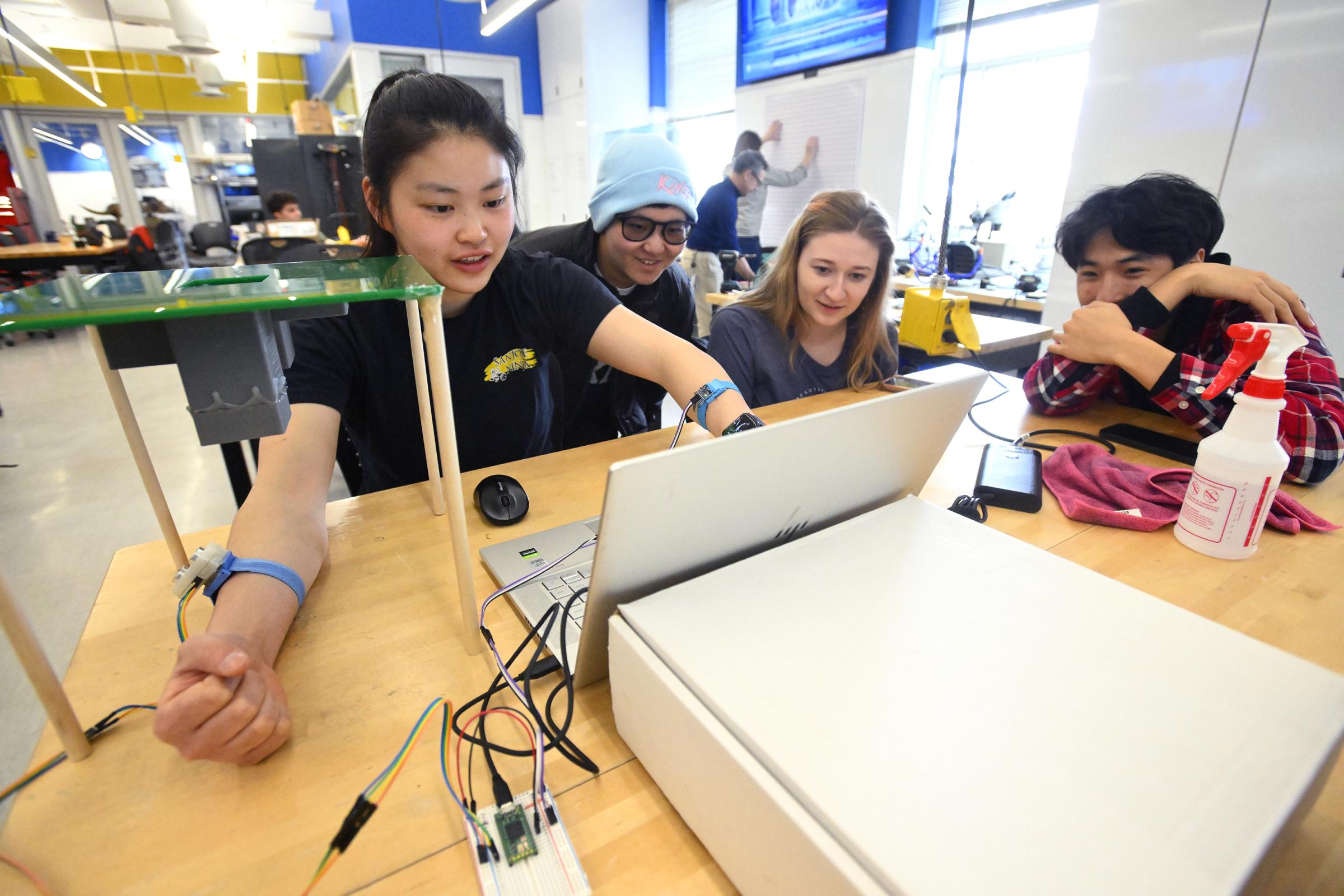A small group of Johns Hopkins University undergraduates were introduced to the field of upper-limb prosthesis during an Intersession course called Prosthesis Instrumentation last month. Over the course of three weeks, participants learned to design and build a controller that would enable transradial amputees—those who have an amputation below the elbow—to play the popular game Minecraft.
The course caught the eye of Ryan McGovern, a first-year student majoring in biomedical engineering, because the idea of creating a game controller from scratch, one that couldn’t be controlled by hand, was a challenge he couldn’t pass up.
“I saw that we had this fun project at the end and I was like, ‘oh that is a great way to actually make something and maybe learn some new programming skills,'” McGovern said. “Sure enough, that’s what happened.”
The class was co-led by Hopkins PhD students Arik Slepyan and Sriramana Sankar. They had wanted to offer the course for Intersession in 2022, but it would have been online, depriving students of the chance to work with electronics and hardware, a key element.
“To really understand the material and create a foundation, understanding electronics and how it works within prosthesis, they do need to work with the components,” Sankar said. “With robotics and things like that, the act of doing is very different than just learning it.”
Both instructors have previously taken semester-long courses that provided deep dives into prosthetic instrumentation; condensing the topic and teachings down into a three-week class proved challenging, they said. But seeing everything come together for the students was part of the fun, according to Slepyan. “When you have no signal, you flex your muscle and then you see big voltage come out. It is really satisfying when it works together.”

